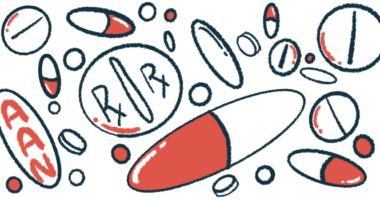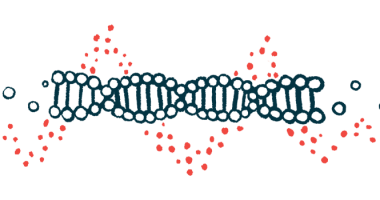Managing Huntington’s symptoms: Insights into disease progression
Last updated Jan. 15, 2025, by Lindsey Shapiro, PhD

Huntington’s disease is a rare genetic, neurodegenerative condition characterized by symptoms such as movement problems, cognitive issues, and emotional difficulties that continuously get worse over time.
While every person who has Huntington’s may experience it in slightly different ways, it generally progresses through five different stages. And with each stage, symptoms increasingly interfere with daily life.
Living with a progressive and life-threatening disease can be extremely stressful and understandably cause much uncertainty and worry. But understanding Huntington’s progression and how it affects symptoms can help you and your caregivers be better prepared for every stage of the disease.
How do doctors evaluate Huntington’s progression?
Doctors typically classify the stage of Huntington’s disease using a standardized test called the Total Functional Capacity (TFC), which is a part of the Unified Huntington’s Disease Rating Scale.
TFC uses scoring that ranges from zero-13 to assess parameters including capacity for work, finances, domestic chores, daily life activities, and level of care. The total score is seen as a reflection of a person’s functional status.
- Early stage Huntington’s (stage 1), with TFC scores ranging between 11-13, involves subtle signs of disease that don’t significantly interfere with daily life.
- Middle stage Huntington’s, with TFC scores between 7-10 (early intermediate; stage 2) or 3-6 (late intermediate; stage 3), is associated with symptoms that gradually interfere with daily life.
- Late stage Huntington’s, with TFC scores of 1-2 (early advanced; stage 4) or zero (late advanced; stage 5), has advanced symptoms that affect being able to live daily life independently.
While how quickly Huntington’s advances can depend on several factors, it usually takes between one and three decades after the first motor symptoms have appeared to reach the most advanced stages.
Early-stage symptoms
The early stage of Huntington’s disease begins when the motor symptoms that enable an official diagnosis to be made are first felt. On average, this happens between the ages of 30-50 and lasts up to around eight years.
Early in the disease course, people with Huntington’s usually maintain most of their functional skills and go about their daily life — including working, driving, and participating in social activities — independently. Still, there’ll be mild changes in movement, cognition, and behavior.
Huntington’s disease early signs might be very subtle at this point and may include:
- chorea, or uncontrollable muscle movements, in the arms, legs, or face
- loss of coordination that may lead to stumbling and clumsiness
- difficulty thinking through complex problems or concentrating
- emotional changes, like feeling anxious, depressed, moody, or irritable.
Middle-stage symptoms
The middle stages of Huntington’s generally occur between three and 16 years after disease onset. People with Huntington’s will likely start to lose some functional abilities and require more help with daily life.
Symptoms may be similar to the previous stage, but they become more noticeable. Increasing movement and cognitive problems might mean that you’re no longer able to work or drive. But you should be able to take care of basic functions, such as eating and getting dressed, on your own.
Middle-stage Huntington’s disease symptoms may include:
- more noticeable chorea and balance issues, raising the risk of falls
- swallowing difficulties
- slurred or difficult speech
- increasing cognitive issues, including memory difficulties
- more significant mood swings or behavioral and psychiatric changes, including delusions or hallucinations.
If you haven’t already had discussions about the future, including the kind of care you want and your finances, this may be a good time to start.
Late-stage symptoms
During the late stages of Huntington’s — which on average are between nine and 26 years from disease onset — assistance with all aspects of daily life is required, including for the most basic functions.
Behavioral changes will likely be significant. Round-the-clock care is usually required, whether at home or at a facility.
Symptoms of late-stage Huntington’s can include:
- severe chorea, although this motor symptom typically declines as other motor problems get worse
- muscle stiffness
- bradykinesia, or slow or difficult movements
- dystonia, or involuntary muscle contractions that lead to abnormal posturing
- more severe speech difficulties
- inability to walk or sit up independently and possibly becoming bedridden
- more severe cognitive dysfunction
- substantial psychiatric and behavioral problems, including apathy, depression, impulsivity, paranoia, or antisocial behaviors.
Despite the loss of functional abilities, people with late-stage Huntington’s may retain some cognitive functions, including the ability to understand what is happening.
Juvenile Huntington’s disease progression
Juvenile Huntington’s disease is a form of Huntington’s characterized by symptom onset before 20 years of age.
Juvenile Huntington’s disease symptoms affect motor and cognitive functions, as well as behavior and mood. Symptoms progress more quickly than those associated with the typical adult-onset form of Huntington’s.
Life expectancy upon onset of juvenile Huntington’s is estimated to be about one decade. The earlier the age at symptom onset, the faster juvenile Huntington’s is likely to progress.
Early-onset Huntington’s disease symptoms can still be broadly grouped into early, middle, and late stages.
The first symptoms of juvenile Huntington’s often include behavioral changes and issues at school, with children having a harder time concentrating, remembering, or learning new things. Muscle stiffness and slowed or clumsy movements might also develop, which may affect handwriting.
In the middle stages, dystonia and muscle rigidity can affect the ability to speak and swallow. Behavior might also change with increasing feelings of anger, frustration, irritability, or depression.
In the later stages, issues with movement, communication, speech, and swallowing will worsen and require an increasing level of daily life support.
Managing Huntington’s symptoms
There is no cure for Huntington’s disease. The treatments mainly manage motor, cognitive, and psychiatric symptoms to support maximum comfort and the best possible quality of life.
Huntington’s disease symptom management usually involves a multidisciplinary approach including medications, supportive care, and counseling. Care will most likely involve several different healthcare professionals, including neurologists; psychiatrists; social workers; dietitians; and physical, occupational, or speech therapists.
Medications for managing Huntington’s symptoms may include:
- treatments to reduce chorea or other motor symptoms
- mood stabilizers
- antipsychotic medications, which can help with both chorea and psychiatric symptoms
- antidepressant and anti-anxiety medications.
Supportive care measures for managing Huntington’s symptoms might involve:
- physical therapy to relieve movement problems due to chorea and other motor symptoms
- speech therapy to help with communication and swallowing difficulties
- occupational therapy to help with doing daily life activities, such as eating, walking, or bathing, and with assistive devices in the home
- nutritional support to help meet energy needs and address swallowing problems
- counseling or other mental health support to help manage emotional and behavioral symptoms and cope with living with a life-threatening chronic illness.
Some people with Huntington’s try making lifestyle adjustments to help with their symptoms and improve physical and mental health including:
- following a healthy diet and exercise regimen, with input from a doctor
- joining a support group or finding other practices to boost mental health.
The goals of Huntington’s symptom management will be different for every person. They’ll also change over time as Huntington’s progresses and different symptoms emerge or get worse. You can help your doctors provide you with the best possible care by keeping them informed of your symptoms and how they’re changing over time.
Huntington’s Disease News is strictly a news and information website about the disease. It does not provide medical advice, diagnosis or treatment. This content is not intended to be a substitute for professional medical advice, diagnosis, or treatment. Always seek the advice of your physician or other qualified health provider with any questions you may have regarding a medical condition. Never disregard professional medical advice or delay in seeking it because of something you have read on this website.
Recent Posts
- How to support someone who is planning for future care
- Antipsychotics improve functional capacity, independence in HD
- Despite dwindling resources, hope endures among researchers
- The ‘invisible’ symptoms of Huntington’s that people don’t see
- Genetic variant delays Huntington’s onset by up to 23 years: Study
- Watching Huntington’s switch roles in our marriage was jarring
- The gift of community is what I’m most thankful for this year
- Revir wins $4.6M grant to advance oral Huntington’s treatment
- The inheritances that shape how we love, lead, and live
- Listening to my body without shame when it says, ‘Rest’
Related content





